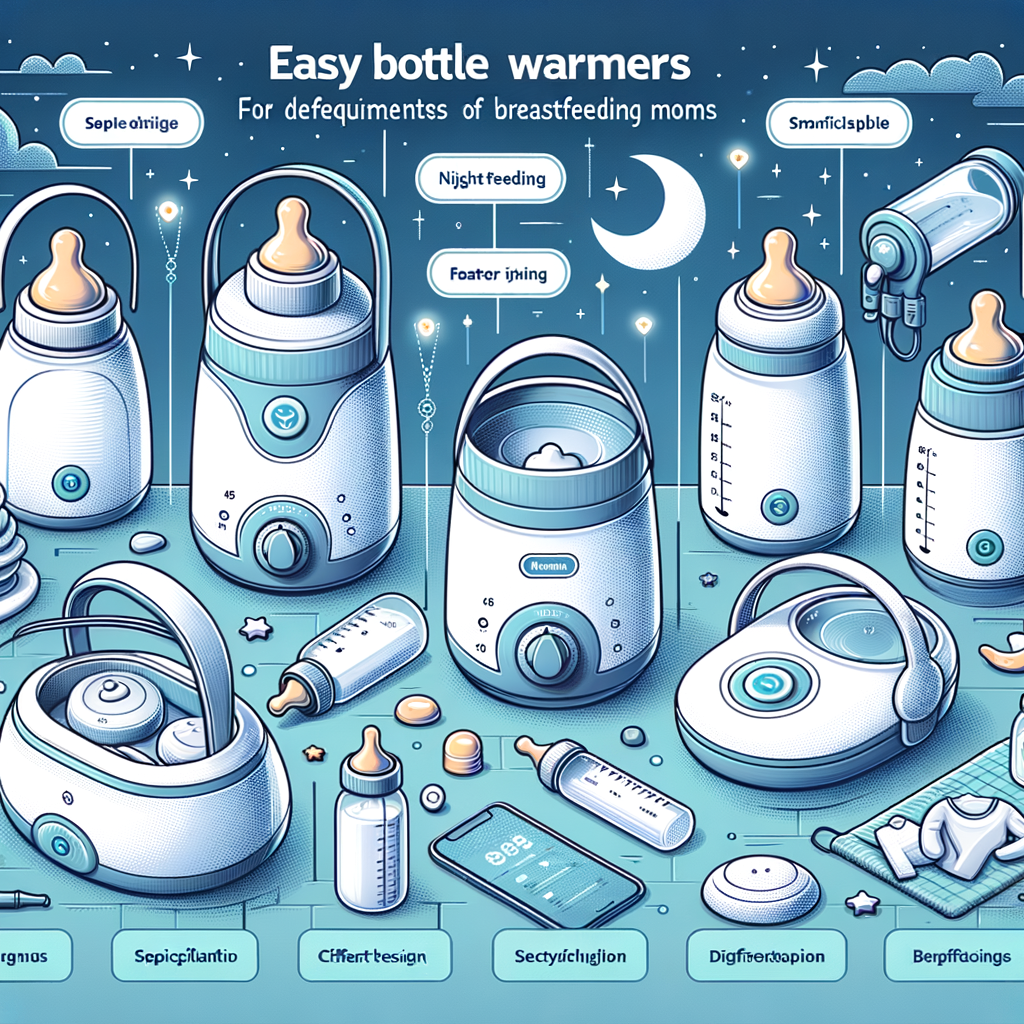
Introduction: The Challenge of Balancing Work and Breastfeeding
For many mothers, the journey of motherhood is filled with joy, love, and a fair share of challenges. One of the most significant challenges that working mothers face is balancing breastfeeding and their professional responsibilities. This delicate balancing act can be overwhelming, but with the right information and support, it is achievable.
- The struggle of breastfeeding while working
- Importance of work-life balance for nursing mothers
Returning to work after maternity leave presents a unique set of challenges for breastfeeding mothers. The need to maintain a regular feeding schedule while managing work duties can be stressful. Many mothers grapple with finding a private space to express milk during work hours, storing the expressed milk safely, and dealing with potential stigma or lack of understanding from colleagues or superiors.
Work-life balance is crucial for all employees, but it is especially vital for nursing mothers. A healthy work-life balance allows mothers to fulfill their professional duties without compromising their ability to provide essential nourishment for their babies. It also reduces stress, which can negatively impact milk supply. Achieving this balance can lead to happier, healthier mothers and babies, and a more productive work environment.
In the following sections, we will delve deeper into the basics of breastfeeding, provide tips for balancing work and nursing, discuss how to maintain milk supply while working, and explore the support available for working breastfeeding mothers. The journey may be challenging, but remember, you are not alone, and with the right tools and support, you can successfully navigate this path.
Understanding the Basics of Breastfeeding
Before we delve into the art of balancing work and breastfeeding, it’s essential to understand the basics of breastfeeding itself. This section will provide a clear and easy-to-understand explanation of what breastfeeding is and why it’s so important.
What is Breastfeeding?
Breastfeeding, also known as nursing, is the process by which a mother feeds her baby with milk directly from her breasts. This natural act is not only a way to provide infants with the necessary nutrients they need for growth and development, but it also creates a special bond between mother and child.
- Definition and importance of breastfeeding
- Benefits of breastfeeding for both mother and child
Breastfeeding is the act of feeding a baby with milk directly from the mother’s breasts. It is a vital part of infant nutrition and plays a significant role in the health and development of the child. The World Health Organization recommends exclusive breastfeeding for the first six months of life, followed by continued breastfeeding along with appropriate complementary foods up to two years of age or beyond.
Breastfeeding offers numerous benefits to both the mother and the baby. For the baby, breast milk provides the ideal nutrition, is easier to digest than formula, and contains antibodies that protect against various illnesses. For the mother, breastfeeding can help to burn extra calories, reduce the risk of certain health conditions, and create a strong bond with the baby.
Understanding the basics of breastfeeding is the first step towards mastering the juggle of balancing work and nursing. In the next section, we’ll explore effective breastfeeding strategies to help you on this journey.
Effective Breastfeeding Strategies
Understanding the basics of breastfeeding is essential for every new mother. Here are a few effective strategies that can help make the process smoother and more comfortable for both mother and baby.
- Creating a Comfortable Environment
- Proper Positioning and Latching
- Maintaining a Regular Feeding Schedule
Comfort is key when it comes to breastfeeding. A quiet, relaxed setting can help both you and your baby focus on the task at hand. Consider using a comfortable chair with plenty of back support, and keep essentials like water, snacks, and a burp cloth within reach. Remember, a calm and comfortable mother often leads to a calm and comfortable baby.
Correct positioning and latching are crucial for successful breastfeeding. The baby’s mouth should cover the entire areola, not just the nipple. This can help prevent soreness and ensure the baby is getting enough milk. There are several breastfeeding positions you can try, such as the cradle hold, football hold, and side-lying position. Experiment to find what works best for you and your baby.
Keeping a regular feeding schedule can help maintain your milk supply and ensure your baby is getting the nutrition they need. Most newborns need to be fed every 2-3 hours, but as they grow, they may be able to go longer between feedings. Keep in mind that this schedule is a guideline, and it’s important to feed your baby whenever they show signs of hunger.
Remember, every mother and baby are unique, and what works for one might not work for another. Don’t be afraid to seek help and advice if you’re struggling with breastfeeding. You’re doing a great job, and every step you take is a step towards your baby’s health and happiness.
Mastering the Juggle: Tips for Balancing Work and Nursing
As a working mom, you may find it challenging to balance your professional responsibilities with the demands of nursing. However, with the right strategies and planning, you can successfully manage both. Here are some tips to help you navigate this journey.
Planning Ahead: Breastfeeding Schedule for Working Moms
Planning is crucial when it comes to balancing work and breastfeeding. A well-thought-out schedule can help you ensure that your baby gets the necessary nutrition, even when you are at work. Here are two key aspects to consider:
- Creating a breastfeeding and pumping schedule: Having a set routine can make it easier for you and your baby. Start by noting down your baby’s feeding times. Then, plan your pumping sessions around these times. For example, if your baby usually feeds every three hours, you can pump at the same intervals while at work. This way, you can maintain your milk supply and ensure that there is always enough milk for your baby.
- Storing breast milk effectively: Proper storage of breast milk is essential to preserve its nutrients. You can store breast milk in clean bottles or milk storage bags. Remember to label each container with the date and time of pumping. Breast milk can be kept at room temperature for up to four hours, in the refrigerator for up to four days, and in the freezer for up to six months. Always use the oldest milk first to ensure that your baby gets the freshest milk possible.
Remember, every mother’s experience is unique. What works for one may not work for another. So, don’t be afraid to experiment and find what works best for you and your baby. The most important thing is to stay flexible and patient with yourself. You are doing a great job!
Pumping at Work: Practical Tips and Tricks
When it comes to balancing work and breastfeeding, pumping at work can be a significant challenge. However, with the right strategies, it can be made easier. Here are some practical tips and tricks to help you manage this task effectively.
- Finding a private and comfortable space for pumping
- Keeping a regular pumping schedule
- Cleaning and storing pumping equipment
Privacy is essential when pumping at work. Look for a space that is not only private but also comfortable. This could be a vacant office, a little-used conference room, or even a dedicated lactation room if your workplace provides one. Remember, comfort is key to successful pumping, so make sure the space is well-lit, has a comfortable chair, and is free from interruptions.
Consistency is crucial when it comes to maintaining your milk supply. Try to pump at the same times each day, as this can help your body regulate its milk production. Remember, the more regularly you pump, the more milk you’ll produce. If possible, try to align your pumping schedule with your baby’s feeding schedule. This can help ensure that you’re producing enough milk for your baby’s needs.
Proper hygiene is vital when handling your pumping equipment. Make sure to clean all parts of your breast pump that come into contact with your milk. This can help prevent the growth of bacteria, which could potentially harm your baby. When storing your equipment, keep it in a clean, dry place. If you’re using a shared fridge at work, consider using a dedicated bag or container to store your pump parts and milk.
In conclusion, pumping at work may seem daunting at first, but with these practical tips and tricks, it can become a manageable part of your daily routine. Remember, the key is to find a comfortable space, keep a regular schedule, and maintain proper hygiene with your pumping equipment.
Maintaining Milk Supply While Working
When you’re a working mother, maintaining your milk supply can be a challenge. But with the right strategies, it’s possible to keep up your milk production while balancing your professional responsibilities. Here are some key tips to help you maintain your milk supply while working.
- Importance of Hydration and Nutrition
- Effective Relaxation Techniques
- Using a Breast Pump Effectively
Staying hydrated and well-nourished is crucial for maintaining your milk supply. Your body needs water to produce milk, so make sure you’re drinking plenty of fluids throughout the day. Try to carry a water bottle with you at all times and sip regularly. Eating a balanced diet is also important. Include plenty of fruits, vegetables, whole grains, and protein in your meals. These foods provide the nutrients your body needs to produce milk.
Stress can negatively affect your milk supply. That’s why it’s important to find effective relaxation techniques that work for you. This could be anything from deep breathing exercises to yoga, meditation, or even a short walk during your lunch break. Find what helps you relax and make time for it in your day. Remember, taking care of yourself is not a luxury, it’s a necessity.
Using a breast pump can be a great way to maintain your milk supply while working. But it’s important to use it effectively. Make sure you’re using the right size flange for your breast and that you’re pumping at a comfortable, effective speed. Try to pump at the same times each day to help establish a routine. And remember, every drop counts, so don’t be discouraged if you’re not pumping large amounts at a time.
By focusing on hydration, nutrition, relaxation, and effective use of a breast pump, you can maintain your milk supply while juggling your work responsibilities. Remember, every mother’s journey is unique, and what works for one may not work for another. So, don’t be afraid to try different strategies until you find what works best for you.
Support for Working Breastfeeding Mothers
As a working mother who is breastfeeding, it’s important to understand that you have rights and protections in the workplace. Let’s delve into these legal rights and how you can advocate for yourself and your child.
Legal Rights and Protections
There are laws in place to protect breastfeeding mothers at work. These laws vary by country and state, but they generally require employers to provide reasonable break time for an employee to express breast milk for her nursing child for one year after the child’s birth. Employers are also typically required to provide a place, other than a bathroom, that is shielded from view and free from intrusion from coworkers and the public, which may be used by an employee to express breast milk.
- Understanding your rights as a breastfeeding mother at work: It’s crucial to familiarize yourself with your rights as a breastfeeding mother. This includes knowing the laws in your specific location and understanding your company’s policies. If you feel your rights are being violated, don’t be afraid to speak up. You have the right to pump at work, and your employer is required by law to accommodate this.
- Advocating for yourself and your child: Advocacy is key when it comes to protecting your rights as a breastfeeding mother. If you feel your rights are not being respected, it’s important to voice your concerns. This could involve having a conversation with your supervisor or HR department, or seeking legal advice. Remember, you are not only advocating for yourself, but also for your child and for other mothers who may be in the same situation.
Being a working mother is a challenging role, but knowing your rights and advocating for them can make the journey easier. Remember, you are not alone. There are resources available to help you navigate this journey, and there are laws in place to protect you.
Building a Support Network
Building a strong support network is crucial for working breastfeeding mothers. This network can provide emotional support, practical advice, and a sense of community. Let’s explore some ways to build this network.
- Finding support within your workplace
- Joining online and local support groups
- Overcoming challenges and celebrating successes
- Continuing to strive for work-life balance
Support within your workplace can be a significant factor in your breastfeeding journey. Talk to your employer about your needs and rights as a breastfeeding mother. You may find that your colleagues are also a great source of support. For example, other working mothers can share their experiences and tips. Remember, it’s okay to ask for help.
Online and local support groups can be a lifeline for working breastfeeding mothers. These groups can offer advice, share experiences, and provide emotional support. You can find these groups on social media platforms or through local community centers. Joining these groups can help you feel less alone and more empowered in your breastfeeding journey.
Every breastfeeding journey has its challenges and successes. It’s important to celebrate your successes, no matter how small they may seem. This could be as simple as successfully pumping at work or reaching a breastfeeding milestone. At the same time, don’t be discouraged by challenges. Remember, every challenge is an opportunity to learn and grow.
Striving for work-life balance is a continuous process. It’s about making time for your job, your child, and yourself. This might mean setting boundaries at work, prioritizing self-care, or asking for help when you need it. Remember, a healthy work-life balance is not only good for you, but also for your child.
In conclusion, building a support network is an important step in balancing work and breastfeeding. Whether it’s finding support within your workplace, joining support groups, overcoming challenges, or striving for work-life balance, remember that you’re not alone in this journey. You’re doing a great job, and every step you take is a victory.














